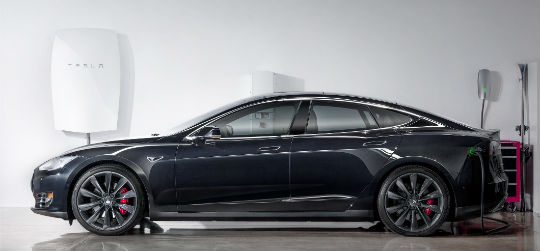



Battery backup systems have become increasingly efficient and affordable over the last few years. The latest generation of lithium ion battery packs (similar to the ones in your computer) have boosted power capacity while decreasing the space required. Prices are also coming down as manufacturers continue to realize economies of scale as they ramp up production.
Battery backup systems for renewable energy have been around since the beginning of solar and wind generated electricity. In the early days, before most solar and wind systems were connected to the grid, batteries were the only way to go. Lead/acid batteries, like the one in your car, were hooked up in banks to hold the power from the days solar or wind output. These systems worked well (and continue to work well) but were limited by the amount of energy stored and the higher cost and maintenance of the total system.
Today most solar and wind systems are connected to the grid (existing power lines). This has allowed the widespread growth of solar, simply because the requirement for backup batteries was replaced by direct connection to the grid through net metering (the utility tracking your usage and giving credit for excess production).
Recently, announcements from Tesla and other battery manufacturers have created renewed interest in adding backup batteries to renewable energy systems in homes and businesses. In some markets, like California, consumers can realize significant savings by utilizing batteries to balance their use of electricity from the grid during peak hours (when rates are higher).
Lithium-Ion - Lithium-ion batteries are known for their high power to weight ratio. For this reason they are being widely used for consumer electronics (cell phones, computers etc) and are now being used extensively for electric vehicles (EV).
Flow batteries - Flow batteries are like regular batteries with the exception that the electrolyte solution (which enables the flow of electrons) is not stored in the cell around the electrodes. Instead it is stored outside of the cell, and is fed into the cell to generate electricity. The only limit to the amount of energy that can be stored is the size of the storage tanks. This type of battery is also currently being used in EV's and has great potential for further advancements.
877-331-1235 | © Copyright DASolar.com.